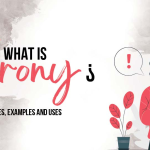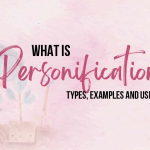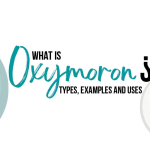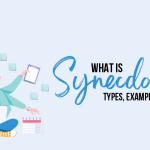Shine in your life like the sun. I just used a simile and motivated you at the same time.
A simile is a figure of speech that compares two unlike things using the words “like” or “as.” It is used to create an analogy or to describe something in a more imaginative or interesting way.
Similes are a way of evoking an image and giving your readers a new way of looking at something they may have previously taken for granted.
In the above quote, the simile implies that the person in question should radiate positivity, warmth, and light, just like the sun does in the sky.
By making this comparison, I encouraged you to strive to be an inspiration and guide to others in the same way the sun is to the world.
The simile suggests being bright, warm, and always providing light, no matter what the circumstances are, and being able to brighten up the lives of those around you.
Another example to help you understand the simile web:
“Life is like riding a bicycle. To keep your balance, you must keep moving.”
– Albert Einstein
The simile “Life is like riding a bicycle” compares the experience of living one’s life to the experience of riding a bicycle. The metaphor draws attention to the idea that in order to maintain balance, you have to keep moving forward.
The simile expresses the idea that in order to have a successful and fulfilling life, you have to keep moving forward and be in constant motion, much like how to balance on a bicycle to maintain balance, you have to keep moving forward.
The simile expresses the idea that in order to have a successful and fulfilling life, you have to keep moving forward and be in constant motion, much like how to balance on a bicycle.
The simile also highlights the idea that in order for both a bicycle and life to work well, one must actively engage in them and make adjustments as needed.
The quote by Albert Einstein is a simple yet powerful way of explaining that life requires effort and adaptation to maintain balance and equilibrium.
You may also like: How to Write An Epilogue: Step-by-Step Guide
While simile is a whole other world, there are slight chances that one could confuse it with metaphors…
One reason why someone might confuse similes and metaphors is that both figures of speech involve comparing two things. However, similes and metaphors differ in how they make the comparison. A simile compares two things using the words “like” or “as,” while a metaphor asserts that one thing is another.
For example, “Life is a journey” would be a metaphor, and “Life is like a journey” would be a simile. Another reason why people might get confused is that they are similar in the sense that they both use comparisons to create imagery and convey deeper meanings and connotations.
Additionally, both figures of speech are often used in literature, speech, and everyday language and can be used interchangeably in some cases. It’s easy to see how the distinction between the two could get blurred.
It’s important to remember that a simile uses “like” or “as” to make a comparison, and a metaphor equates two things without using these words. With practise and exposure, it’s easier to distinguish between them.
You may also read: How to Publish a Book? | Publish Your Book | BlueRoseOne
What is Simile? What are the types of Simile.
There are many different types of similes, but some common ones include:
- Direct simile: A direct simile is a type of literary device that compares one thing to another using the words “like” or “as.” For example: “He runs like a cheetah.” In this sentence, the speaker is directly comparing the way in which the person runs to the way in which a cheetah runs. Direct similes are often used to add imagery and description to writing and can be an effective way to help the reader picture a scene or idea more clearly.
Example: “She sings as sweet as a bird.” In this sentence, the speaker is directly comparing the way in which she sings to the way in which a bird sings. - Implied simile: An implied simile is a type of comparison that does not use the words “like” or “as,” but instead relies on the reader or listener to infer the similarity. Implied similes are often more subtle than direct similes and can be more open to interpretation.
Example: “She danced with the grace of a swan.” In this sentence, the speaker is describing a person’s dance in a way that suggests they move with the same grace and elegance as a swan, but they do not use the words “like” or “as.” It’s up to the reader to understand the comparison between the person’s dance and a swan’s movement. - Extended simile: An extended simile is a type of comparison that is longer and more elaborate than a simple simile. Instead of a single comparison, an extended simile provides a series of comparisons or a more detailed description of the similarities between the two things being compared. Extended similes can add more depth and detail to the writing and can help the reader better understand the character, setting, or emotion that the author is trying to convey.
Example: “His love for her was like a rose, delicate yet strong, beautiful but with thorns that could cause pain.” This extended simile compares the speaker’s love to a rose by describing the rose’s physical characteristics and behaviors. The delicate and strong nature of a rose, its beauty, and its thorns are all being used to describe the speaker’s love. This extended simile helps the reader understand the speaker’s feelings more deeply than a simple simile like “His love for her was like a rose” would. - Personification simile: A personification simile is a type of comparison that assigns human characteristics or behaviours to non-human things. Personification similes can be used to give inanimate objects or animals human-like qualities in order to help the reader understand or relate to them better.
For example: “The wind whispered secrets in my ear.” This simile assigns human characteristics (whispering, having a secret) to the non-human thing called wind.
A personification simile is often used to give life and emotions to inanimate objects, animals, or natural elements. It can help readers develop an emotional connection with the object or subject by illustrating a point of view or feeling or by providing an analogy or metaphor. Personification similes are effective literary devices for creating vivid imagery, improving writing, and making the story more interesting and relatable to readers. - Antithesis simile: An antithesis simile is a type of comparison that uses contrasting words, phrases, or images to create a stark difference between the two things being compared. It’s a figure of speech that juxtaposes two contrasting ideas in a parallel structure.
For example: “Life is like a dream, full of ups and downs, joys and sorrows.” This simile compares life to a dream and uses contrasting words like “ups and downs, joys and sorrows” to show that life is full of contrasting experiences and emotions.
Antithesis similes are used to add complexity and depth to the characters or objects being described. They create tension and interest in the writing and help to paint a more nuanced and detailed picture of the subject matter. - Metaphor-simile blend: A metaphor-simile blend is a type of comparison that combines elements of both metaphors and similes. It’s a figure of speech that uses a simile to introduce an implied metaphor.
For example: “He was a lion on the battlefield, fierce and unyielding.” In this example, the person is described as a lion, which is a metaphor, but the simile “fierce and unyielding” is used to further elaborate on the metaphor and strengthen it.
A metaphor/simile blend can add layers of meaning to the comparison, making it more interesting and impactful. It can also add more detail, making the comparison more vivid and memorable for the reader or listener. Using a simile to elaborate on a metaphor can also make the comparison feel more relatable and concrete for the reader. - Other similes could be historical, literary, and cultural similes.
In conclusion, Similes are frequently used in literature, speech, and common language and can assist writers add imagery and description. They can be an excellent approach to help the reader visualise a scenario or idea and elicit emotions.
Read: What is Conflict in a story? How to structure a story?
However, it is vital to realise that similes are not the same as metaphors, which state that one item is the same as another. Similes utilise the words “like” or “as,” whereas metaphors do not. It will become easier to distinguish between similes and metaphors with experience and exposure.
Till the time I get back as fast as the day ends in winters, I wish you a splendid time reading and hunting for similes, anaphors, metaphors, irony, and many more.
Happy Reading.
















